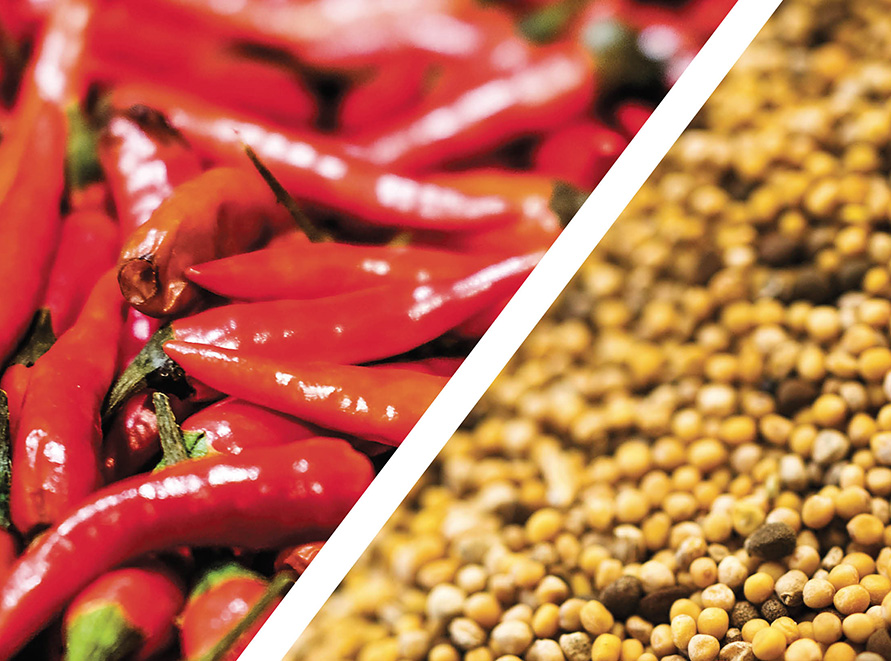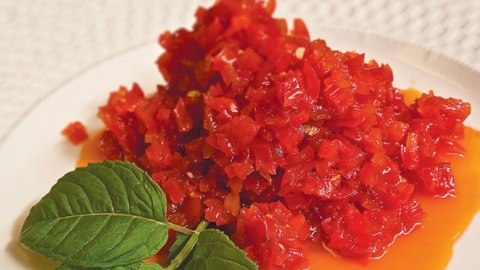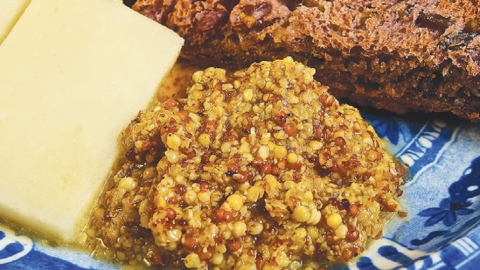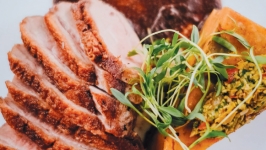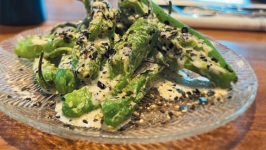Mustard and Chiles Heat Up the Holidays
What do mustard and chiles have in common?
Heat: Without actually being hot, they create the physical sensation of heat.
Health: They are both rich in health-giving nutrients.
Holiday: Both make exciting holiday eating and homemade gifts.
Mustard and chiles are daily reminders that life is exhilarating. These two incarnations—Smoky Honey Mustard and Red Chile Jam—deliver. They’re simple and inexpensive to make and will knock the socks off your family and friends. Pack them up for stellar gifts to be enjoyed, savored and rejoiced over.
What is mustard?
The brassica family contains cabbage, kale, Brussels sprouts, arugula, turnips and mustard. Here we are talking about mustard seeds. They come in yellow (milder), brown (medium) or black (more potent). You’ve probably had “prepared mustard” like French’s or Dijon made with ground mustard seed or maybe you’ve tried German mustard with the seeds still visible.
Mustard seeds are impotent until they get crushed or ground and then mixed with water. That starts an enzymatic cascade resulting in the creation of mustard oil (or allyl isothiocyanate, aka AITC) the chemical responsible for that breathtakingly pungent punch. AITC protects the plant from predators (like us), but it is also harmful to the plant itself, so it is stored away in a clever mechanism that it is activated only when chewed.
Mustard, specifically AITC, has a long list of health benefits that protect the body from disease and damage by helping to prevent cancer, lowering cholesterol, balancing insulin levels and reducing inflammation. It’s a decongestant, antibacterial, antifungal, reduces pain and strengthens bones. So enjoy the burn!
The Heat in Chiles
The chemical that gives chile peppers their heat, capsaicin, is different. Humans seem to love the burn, so we have cultivated and spread chiles worldwide.
Why do we love them so? Capsaicin tricks the body into thinking it is on fire. It interacts with a protein on the tongue that usually senses heat. Your brain responds by sending out pain-killing endorphins and pleasure-giving dopamine. Together they trigger a nice, high sense of well-being.
According to a 2017 study from the University of Vermont and a 2015 study published in the British Medical Journal, regular chile eaters have less cancer, diabetes, obesity and cardiovascular inflammation and live longer lives.
Chiltepin, the mother of all peppers, is the original pepper that has been selected and hybridized for centuries to give us hundreds of modern varieties. It can be found growing near Tumacacori, Arizona. Chiltepins are ferociously hot to us and other mammals who would chew up their seeds. But it’s not hot at all to birds who swallow the seeds whole, then disperse them with a nice poop of fertilizer.
Red peppers, sweet or hot, are the ripe version of green. The ripening increases sweetness and aroma making them seem more like fruit and less like a vegetable. Red peppers are in season now. I am an enthusiastic red pepper lover and this pepper jam is a great way to preserve them. Make it hot or sweet to your taste but be sure to use fresh (not dried) sweet red peppers and hot red chiles.
How do you tell how hot peppers are? Remove the stem and take a little nibble. Heat is concentrated in the seeds and in the white membrane.


